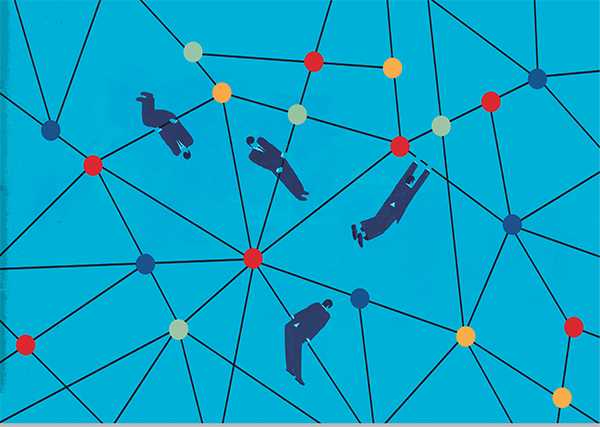Sponsored
A Revolution in Business
Provided byBBVA
Editor’s Note: Following is an excerpt from Thomas W. Malone’s 2004 book, The Future of Work: How the New Order of Business Will Shape Your Organization, Your Management Style, and Your Life. Malone, the Patrick J. McGovern Professor of Management at the MIT Sloan School of Management, is among the speakers at the April 9 event Open Mind: How The Internet is Changing Our Lives co-hosted by BBVA and MIT Technology Review
We are now in the early stages of a revolution in business that may ultimately be as profound as the American and French revolutions in the late 1700s. Like the democratic revolution that changed the role of government, the revolution in business is leading us to a world where people have more freedom, a world in which more and more people are at the center of their own organizations.
New ways of organizing work are emerging because new information technologies are giving more people the information they need to make well-informed choices. But the real impetus behind this revolution is our own human desires for economic efficiency and flexibility, and for personal satisfaction and fulfillment.
There is a technical term for the kind of organization this revolution will make more common. The word is decentralized. We define decentralization here as the participation of people in the decisions that affect them. Unlike centralized hierarchies such as military organizations or loose hierarchies such as universities, decentralized democracies or markets do not bind individuals by decisions to which they do not personally agree.
RELATED STORIES View other articles provided by BBVA OpenMind:
• Working Together in a Networked Economy
• Banking, Information, and Technology: Toward Knowledge Banking
How much energy and creativity might be unlocked if everyone in an organization felt they were in control? With new technologies like e-mail, instant messaging, and the Internet, it’s now becoming economically feasible for the first time in human history to give huge numbers of people the kinds of freedom and flexibility in business that used to be common only in small organizations. We can now combine the economic benefits of bigness, such as global scale and diverse knowledge, with the human benefits of smallness: flexibility, creativity, motivation, and innovation — benefits that also happen to be critical to business success in a knowledge-based and innovation-driven economy.

To be successful in the world we are entering, we will need to shift our thinking from command-and-control to coordinate-and-cultivate. Coordinating and cultivating are not the opposites of commanding and controlling; they are supersets that include the whole range of possibilities, from completely centralized to completely decentralized. Coordinating focuses on activities that need to happen and the relationships among those activities; cultivating brings out the best in a situation through the right combination of controlling and letting go. For managers to be effective in the world we are entering, they will need to move flexibly back and forth on the decentralization continuum as circumstances demand.
Like the democratic revolution that preceded it, the business revolution we have entered is a time of dramatic change in our society’s economies, organization, and cultural assumptions. Information technology is creating a world that is both more economically efficient and more flexible than any other in human history — and this efficiency and flexibility is enabling individuals to bring more of their own personal values into business.
To read the full article, click here.
Adapted and reprinted with permission of Harvard Business Publishing. The original version appeared as chapter 1 from The Future of Work: How the New Order of Business Will Shape Your Organization, Your Management Style, and Your Life by Thomas W. Malone. Copyright © 2004 by Thomas W. Malone; all rights reserved.
Keep Reading
Most Popular
Large language models can do jaw-dropping things. But nobody knows exactly why.
And that's a problem. Figuring it out is one of the biggest scientific puzzles of our time and a crucial step towards controlling more powerful future models.
The problem with plug-in hybrids? Their drivers.
Plug-in hybrids are often sold as a transition to EVs, but new data from Europe shows we’re still underestimating the emissions they produce.
Google DeepMind’s new generative model makes Super Mario–like games from scratch
Genie learns how to control games by watching hours and hours of video. It could help train next-gen robots too.
How scientists traced a mysterious covid case back to six toilets
When wastewater surveillance turns into a hunt for a single infected individual, the ethics get tricky.
Stay connected
Get the latest updates from
MIT Technology Review
Discover special offers, top stories, upcoming events, and more.